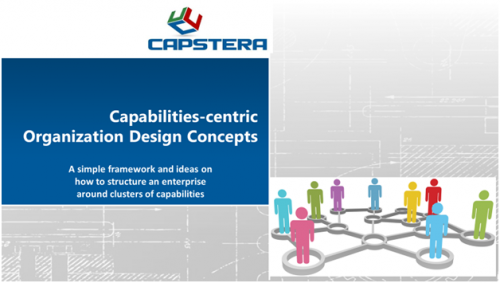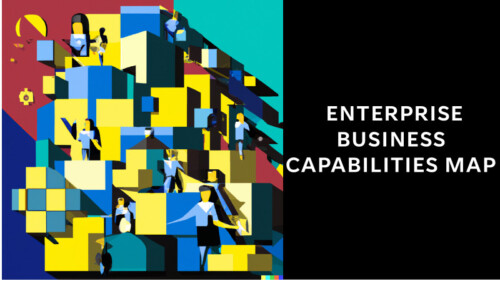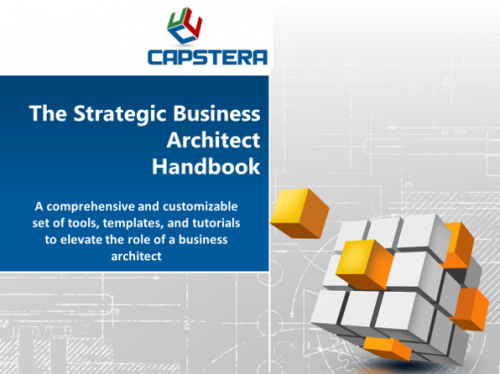Most companies start their business architecture journey without a business architecture model, which is clearly a mistake.
What is a Business Architecture Model?
Capstera’s business architecture model is a simple yet effective way to gain a holistic perspective of what business architecture means and how it manifests. The goal of the business architecture model is not to overwhelm but help chart out the course and determine which components and elements are essential to the enterprise business architecture journey. A team of business architects, enterprise architects, and data architects are the primary consumers of a business architecture model.
Business Model vs. Business Architecture Model:
A business model (or a business model canvas) is not a business architecture model. A business model deals with how a company survives and thrives with details of customer segments, products, value propositions, revenue streams, and the like. A business architecture model concerns providing a conceptual model of how business architecture components come together to provide a cohesive and coherent view of an enterprise. Each model is essential and complementary but not the same.
The highest-level view of the Capstera Business Architecture Model:
- Strategic Context: The core reason the company exists and its strategic blueprint.
- Business Context: The comprehensive enterprise information pertinent to business architecture’s effectiveness.
- Business Capabilities: The business capabilities capture “What” a business does.
- Value Streams: Value streams or Stakeholder Journeys capture the “How” business activities come together to serve the end-to-end needs of stakeholders.
- Data Context: Data is the lifeblood of an organization, and juxtaposing data to other business architecture elements helps provide transparency in information flows
- IT Context: IT enables and powers the business capabilities and value streams, and the overlay of IT information creates the underpinnings of how capabilities and value streams come to life.
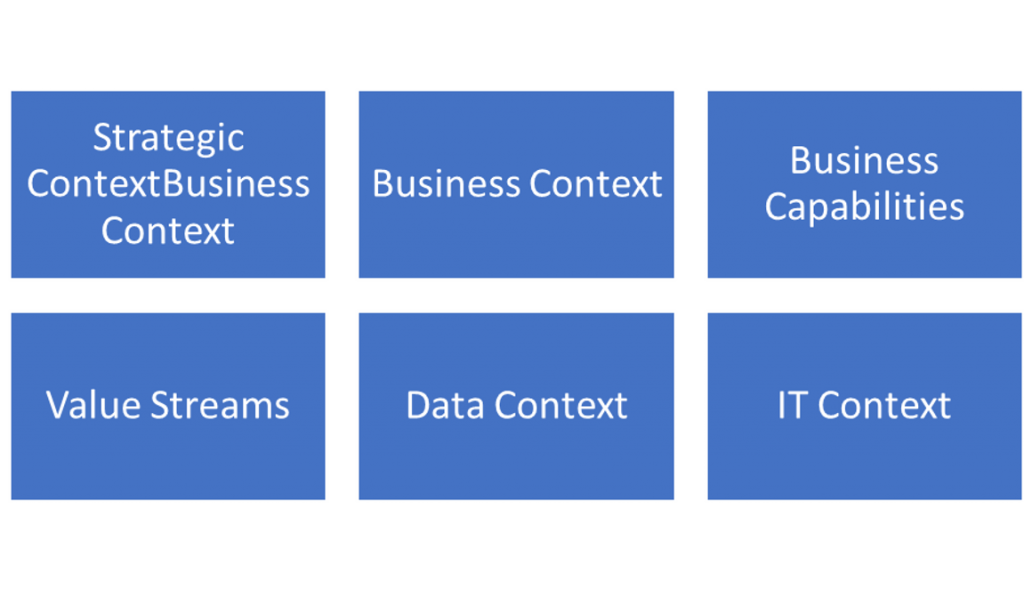
Now, let’s examine each area and the underlying elements that constitute these top-level constructs in the business architecture model.
Sub-Elements of the Top-Level Business Architecture Model Components:
Strategic Context:
The strategic context provides the business motivation and the rationale for the enterprise.
- Strategic Context:
- Vision and Mission
- Goals and Objectives
- Business Model
- Operating Model
- Strategic Plan
- Research and Analysis
- Goals and Objectives
- SWOT (Strengths, Weaknesses, Opportunities, and Threats)
- Strategy Pillars
- Initiatives
- Programs
- Projects
- KPIs (Key Performance Indicators)
- Programs
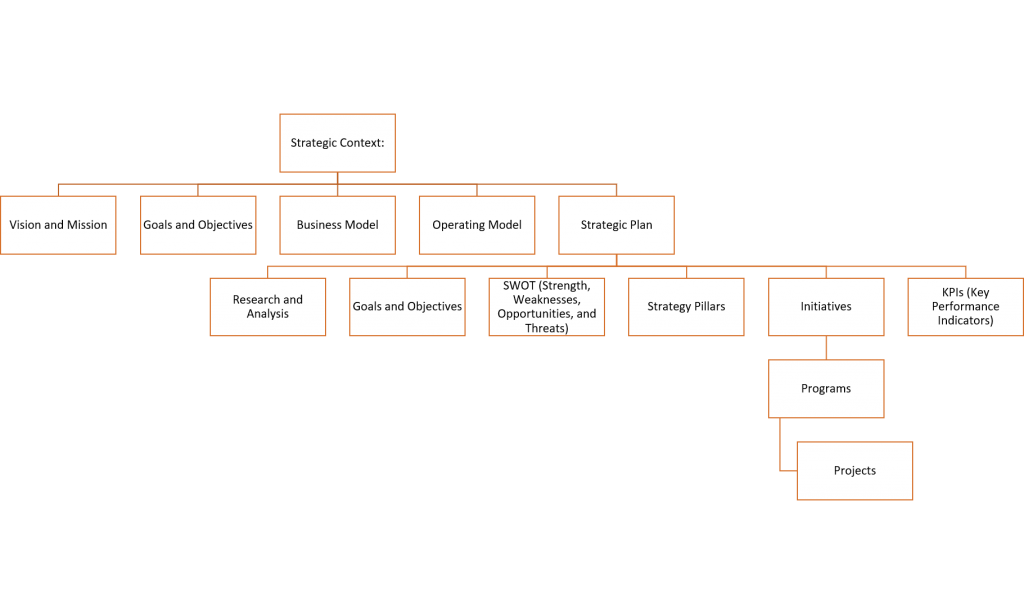
Business Context:
Business context or enterprise context is various types of information that is an input and a mapping element or an overlay to the other elements to understand the footprint, overlap, and relationship in a granular context.
- Business Context
- Domains:
- Business Domains
- Information Domains
- Architecture Domains
- Technology Domains
- Inputs and Outputs
- Structure
- Locations
- Business Units
- Departments
- Roles
- Channels
- Offerings
- Products
- Services
- Solutions
- Constituents
- Employees
- Partners
- Suppliers
- Shareholders
- Community
- Customer Segments
- Directives
- Business Rules
- Standard Operating Procedures
- Methods
- Measurements
- Key Performance Indicators
- Benchmarks
- Exposures
- Risks
- Controls
- Domains:
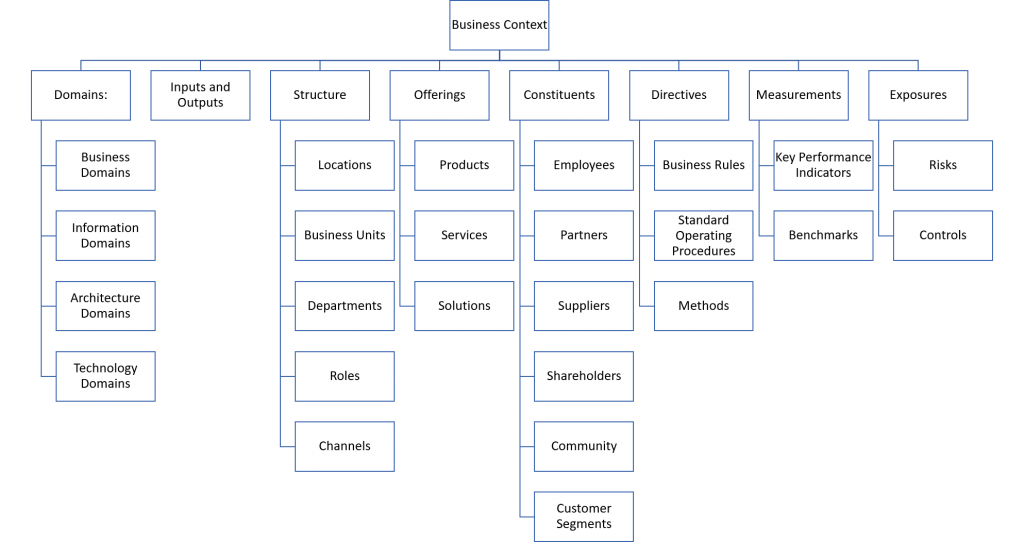
Business Capabilities:
Business capabilities are the definition of “What business does!” and it is the glue that binds the various aspects of the enterprise by abstracting the underlying form, function, and flow.
- Business Capabilities
- Value Chain Entities
- Top-level Business Capabilities (Strategic Level)
- Granular Business Capabilities (Operational Level)
- Top-level Business Capabilities (Strategic Level)
- Value Chain Entities
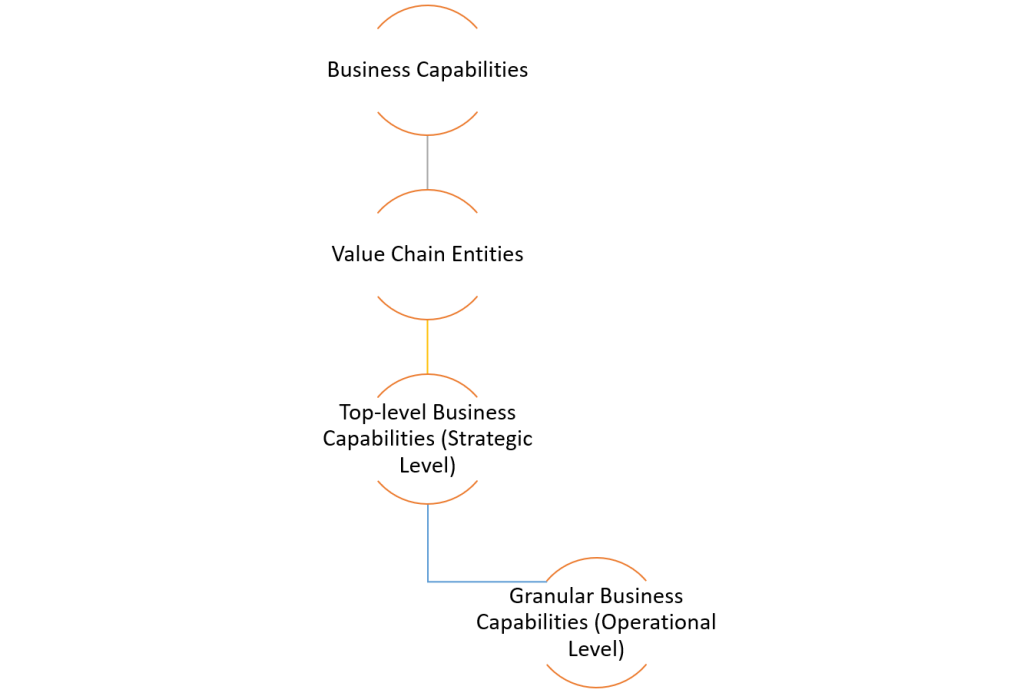
Please read more about various aspects of how to create, manage, and harness capabilities in the following insights and products:
How to build a business capability map
Value of Business Capability Mapping
Business Architecture Case Study
Value Streams:
Value Streams are end-to-end flows of delivering value to a stakeholder. If capabilities capture the “What,” the value streams and related elements capture the “How.”
The following are some of the essential elements of a value stream. Of course, what and how many different processes may be appropriate depends entirely on the situation and the specific use case.
- Value Streams
- Journeys
- Processes
- Process Map
- Business Context Diagram
- Data Flow Diagram
- State-Machine Diagram
- Network Diagram
- Decision Tree
- Entity Relationship
- Control Diagram
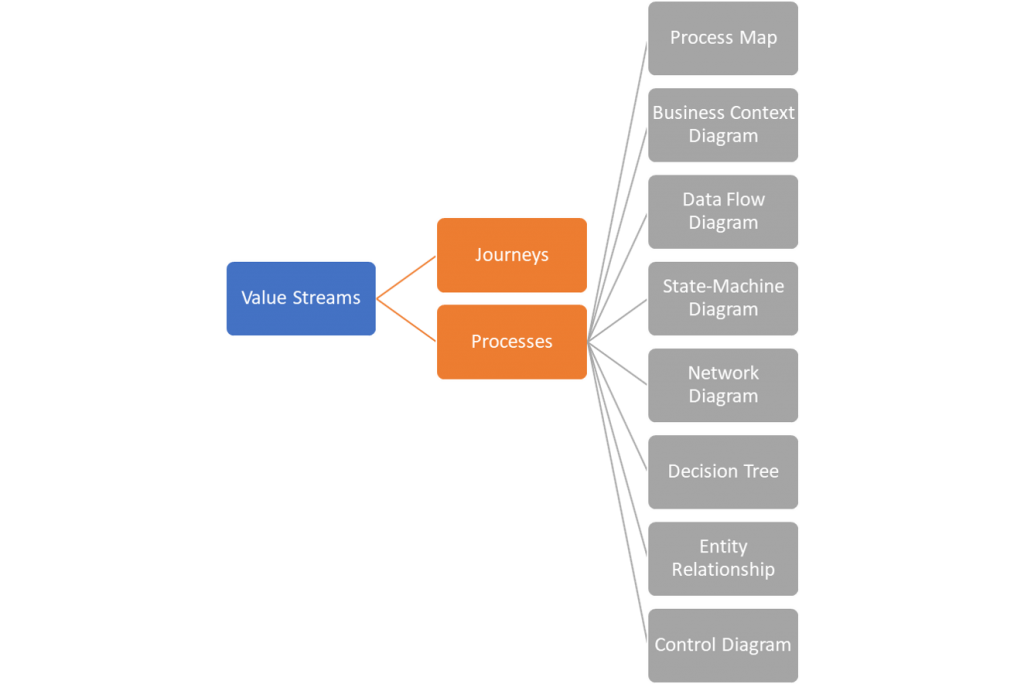
Data Context:
Data context provides the information overlay for the business architecture. Traditional data and information architecture are allied disciplines and are complementary to what is necessary for the context of business architecture. For example, data architects usually collaborate with business and enterprise architects to model the following information.
- Data Context
- Business Information Model
- Subject Areas
- Data Entities
- Common Data Model
- Business Glossary
- Subject Areas
- Business Information Model
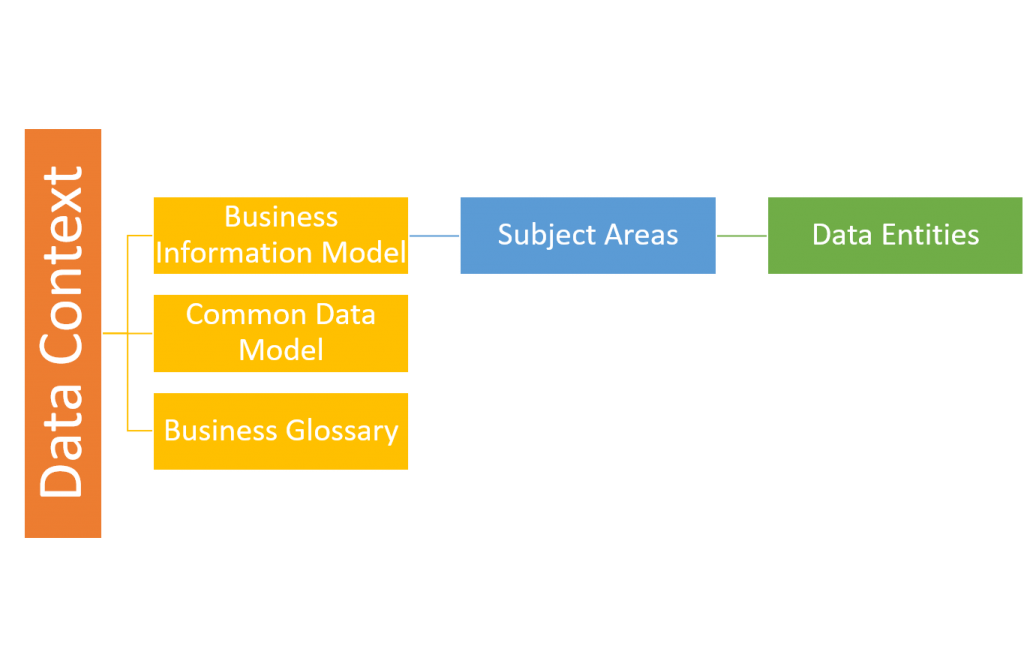
Technology Context:
Technology context is the information technology foundational elements which power the various capabilities and realize the value streams. The following are just a few samples, and enterprise business, enterprise, and technical architects will need to determine what minimal information is necessary to achieve the desired results.
- Technology Context:
- Services
- Software
- Databases
- Network
- Infrastructure
- Datacenters
- Cloud (Public and Private)
- Security
- Identity

What is the value of a Business Architecture Model?
A well-thought-out business architecture model provides a bird’s eye view of how enterprise modeling comes together and what components, elements, and entities are integral to the business architecture journey.
Of course, one can add or modify a specific component, element, or entity. Still, without a perspective of the scope and depth of the business architecture endeavor, the teams will be lost and unable to achieve the initial objectives.
Capstera business architecture software can support the business architecture model. Therefore, it is not necessary to boil the ocean; instead, start with a few core components and entities and make progress along the way.
-

Business Architecture Current State Audit
-

Business Architecture Sample Case Study
-

Business Capability Management Playbook

